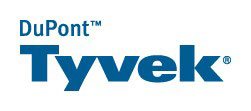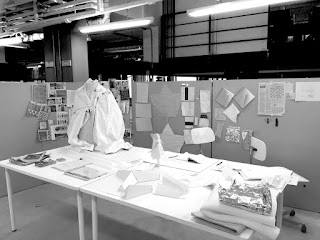
Tessellating Tyvek Lanterns were created by Helen Hiebert and are featured in her
2017 Twelve Months of Paper calendar and in
Day 13 of the 25 Days of Paper. You might be wondering - what is tessellation? According to Wikipedia, "A tessellation of a flat surface is the tiling of a plane using one or more geometric shapes, called tiles, with no overlaps and no gaps." As you can see from the photos, the accordion folds on surfaces of Hiebert's Tyvek lanterns can be described as displaying 3D tessellation.
Helen Hiebert is a Vail Colorado based paper artist with 25 years of experience, including making paper projects, teaching workshops, films, and five how-to books on papermaking. Visit
Helen Hiebert Studio online for more information about Hiebert and her work.

As described on her website, Hiebert comments on the use of Tyvek to make these lanterns:
Tyvek is one of those wonder materials. It acts like paper, but is water resistant and virtually tear-proof. It folds really well too. It comes in white and you can stain it with acrylic paint, watercolor or ink. As you can see, I stained both sides of the Tyvek for these lanterns.
The
2017 Twelve Months of Paper calendar is available for sale, and the she ran a Kickstarter campaign (now ended) that successfully funded the project with 144 backers. Visit
her Kickstarter campaign page to see more about all the paper projects featured in the calendar, including a video.
Many thanks to Helen for providing the information and photos used here with her permission.
Helen Hiebert is also a Material Concepts' customer and is one of many artists that purchase Tyvek from Material Concepts.
Paper-like Tyvek styles and
Fabric-like Tyvek styles can be purchased online or
contact Material Concepts for more information and assistance with selecting the Tyvek style that will be best suited for a specific project.


































